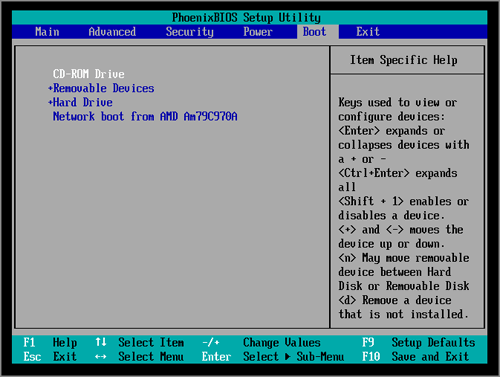USB BIOS Flashback is a feature that allows users to flash BIOS to supported motherboards even without CPU or RAM. You should be able to use them as regular USB ports; don’t touch the Flashback button, and avoid plugging in USB devices during boot.
Can you use the BIOS USB for other things?
Yes, sir, you can use the bios USB port as a standard USB port.
What does it mean to use a USB to flash BIOS?
Short for “basic input and output system”, the BIOS is the main program on your computer and needs to be updated occasionally to ensure that your machine functions properly. One of the most common ways to update – or “flash” – the BIOS is to use a standard USB flash drive.
Do you need a USB to flash BIOS?
To update your BIOS via DOS, you will need a bootable USB. Take the updated BIOS version and BIOS update utility that you downloaded from the manufacturer’s website and copy them to the newly bootable USB stick. Leave the USB stick connected to the computer. Then reboot the system.
Can I use USB 3.0 for BIOS flash?
The make/size of the USB drive is not a factor. The only thing that makes a difference is whether your board allows bios update via a USB 3.0 slot or not. Other than that, any USB drive can be used to update the bios on any semi-modern motherboard.
What does USB SS10 mean?
SS+ or SS10 — USB 3.1 Gen. You can connect a monitor that doubles as a USB hub in parallel with just one cable. Lightning-Thunderbolt 3. Thunderbolt 3 is designed as a USB Type-C port and offers Thunderbolt 3 transmission in addition to USB 3.1 Gen 2 and DisplayPort 1.3.
What is UEFI mode?
UEFI stands for Unified Extensible Firmware Interface. UEFI provides a faster boot time. It does the same job as a BIOS. Still, with one fundamental difference: it stores all initialization and boot data in a . UEFI supports disk sizes up to 9 zettabytes, while BIOS only supports 2.2 terabytes.
How do I install BIOS?
Update your BIOS or UEFI (optional). Download the updated UEFI file from the Gigabyte website (on another working computer). Transfer the file to a USB drive. Connect the drive to the new computer, launch UEFI, and press F8. Restart. Follow the on-screen instructions to install the latest version of UEFI.R
How do I know if my BIOS needs to be updated?
Some will check if an update is available, while others will only show you the current firmware version of your current BIOS. In that case, you can go to the download and support page for your motherboard model and see if a newer firmware update file is available than the one currently installed.
How can I flash BIOS?
Flash AMI UEFI BIOS by FLASH. Know your model number. Download the BIOS corresponding to your motherboard and version number to your USB device. Press the “delete” key to enter the BIOS setup, select “Utilities,” and select “M-Flash”. Extract the downloaded BIOS zip file and paste it onto your USB storage device.

What type of USB do you need to flash the BIOS?
Always use a USB port directly removed from the motherboard. Additional note: The same goes for those with USB 3.0 ports. Those probably won’t work this way, so stick with the 2.0 ports.
Can I flash my BIOS with the CPU installed?
The CPU is physically compatible with the motherboard and will work fine after a BIOS update, but the system will not POST until you update the BIOS.
Which USB should I use for BIOS?
USB BIOS Flashback is a feature that allows users to flash BIOS to supported motherboards even without CPU or RAM. You should be able to use them as regular USB ports; don’t touch the Flashback button, and avoid plugging in USB devices during boot.
Is USB 3.0 the same as USB SS?
USB 3.0 introduces a new operating speed called SuperSpeed. Compared to a USB 2.0 bandwidth of 480 Mbps, SuperSpeed supports 5.0 Gbps, making it ten times faster than USB 2.0. In addition to increased bandwidth, USB 3.0 host controllers and devices promise compatibility.
What does the SS symbol on the USB port mean?
Among other improvements, USB 3.0 adds a new transfer speed called SuperSpeed USB (SS), which can transfer data at up to 5 Gbit/s (625 MB/s), which is about ten times faster than the Hi-Speed (maximum for USB 2.0 standard).
Which USB is faster, ten or SS?
The new logos are the default USB logo to identify USB 2.0 ports or slower. “SS” marks, which stands for SuperSpeed, to determine USB 3.0 ports, also known as USB 3.1 gen 1. “10” effects, which stand for 10 Gbps, to choose USB 3.1 gen two ports with ultra-fast connectivity.
How do I enable BIOS to boot from USB?
Plug your USB into your device, reboot your computer, and enter the BIOS settings. In the BIOS settings, go to the ‘Boot’ tab. Select ‘Boot Option #1’. Press ENTER. Select your USB device. Press F10 to save and exit.
How do I boot from USB in UEFI mode?
How do I boot from USB in UEFI mode? Turn on your computer, then press the F2 keys or other function keys (F1, F3, F10, or F12) and the ESC or Delete keys to open the Setup window. Open the utility. Navigate to the Startup tab by pressing the right arrow key. Select the UEFI/BIOS boot mode and press Enter.
Can Windows 10 boot from USB?
When you want to start Windows 10 on another computer, insert your USB drive into that PC. Press the appropriate key to launch your boot menu and choose the option to boot from the USB drive. The easiest way is to hold down the Shift key and restart the computer.
